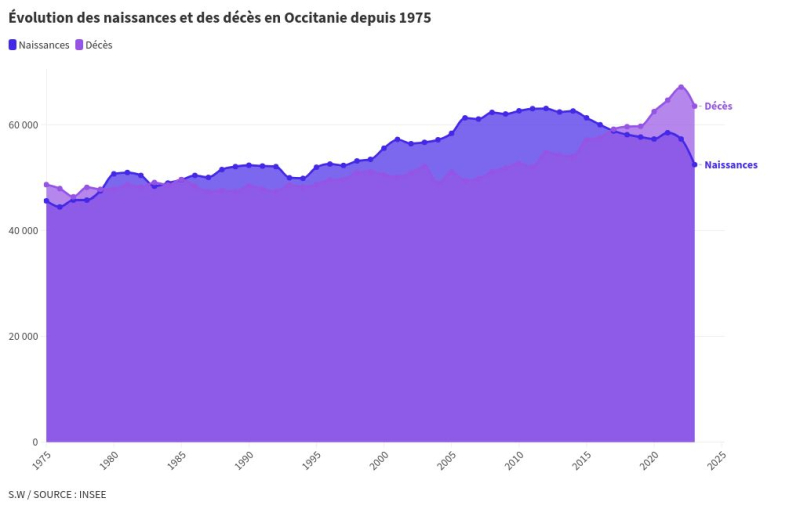Demographics in Occitania: the birth rate is collapsing, life expectancy is increasing, the natural deficit is widening… the INSEE report
This Tuesday, September 10, INSEE released the figures for births, deaths and life expectancy in Occitania. We take stock.
The natural deficit is widening in Occitanie. This is due in particular to a birth rate that is collapsing in the region. According to the latest figures from INSEE, 52,400 babies were born in 2023 to mothers living in Occitanie, a drop of 8.5% in one year.
A much greater drop than in previous years, but also than the national average. Behind Corsica, Occitanie is the region where the number of births has fallen the most between 2022 and 2023.
“The total fertility rate stands at 1.53 children per woman compared to 1.67 in 2022, details INSEE in its report. Occitanie is the 4th region in France where women have the fewest children, behind Corsica, Grand Est and Nouvelle-Aquitaine."

The report explains this drop in fertility by "a postponement of certain parenthood plans that may have been disrupted by difficulties related to inflation, by tensions on the real estate market as well as by international crises or climate change that can affect the ability to plan for the future".
As a result, women are having children later and later. While they had them at an average age of 26.3 in 1975, the average age is now 31.3.
Life expectancy on the rise
The INSEE report highlights some good news on the life expectancy front. Having been falling for 3 years and the start of the health crisis, it is now rising again in the region.
In Occitanie, it was 85.8 years for women and 80.5 years for men in 2023. The life expectancy gap between men and women is therefore narrowing: it is now only 5.3 years, compared to 6.9 years 25 years ago.
“The decline in cancer mortality has been slower among women than among men over the last twenty years, due in particular to the rise in smoking in the 1950s to 1980s for generations of women aged 50 or over today”, specifies INSEE.




